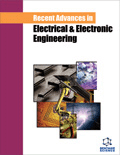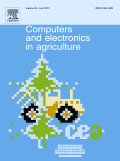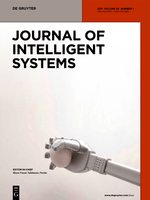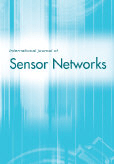
Journal of Sensors
Scope & Guideline
Illuminating the Path of Sensory Research
Introduction
Aims and Scopes
- Sensor Technology Development:
Research on the design, fabrication, and optimization of various types of sensors, including but not limited to optical, acoustic, and chemical sensors. - Data Fusion and Analysis:
Studies that explore methodologies for integrating data from multiple sensor sources to enhance accuracy and reliability in measurements and predictions. - Applications in Healthcare:
Innovative applications of sensors in medical diagnostics, monitoring systems, and wearable technology for enhancing patient care and health management. - Environmental Monitoring:
Research focused on the use of sensors for monitoring environmental parameters, including air quality, water quality, and ecological changes. - Smart Agriculture:
Application of sensor technologies in agricultural practices to optimize resource usage, monitor crop health, and improve yield. - Machine Learning and AI Integration:
Exploration of machine learning techniques for improving sensor data processing, anomaly detection, and predictive analytics. - Robotics and Automation:
Development of sensor-based systems for robotics applications, including navigation, object detection, and human-robot interaction.
Trending and Emerging
- Smart and Wearable Sensors:
Research focusing on smart and wearable sensors that monitor health metrics and enhance personal health management is rapidly gaining traction. - AI and Machine Learning Applications:
The integration of artificial intelligence and machine learning techniques in sensor data analysis and interpretation is becoming a predominant theme, enhancing predictive capabilities. - Internet of Things (IoT) Integration:
Studies exploring the application of sensors within IoT frameworks are on the rise, emphasizing connectivity and real-time data processing across various domains. - Environmental and Climate Monitoring:
Research dedicated to environmental and climate monitoring using advanced sensor networks is increasingly relevant, particularly in the context of climate change. - Robotics and Autonomous Systems:
The development of sensor technologies for use in robotics, including autonomous navigation and interaction capabilities, is a growing area of interest. - Advanced Imaging Techniques:
There is a notable increase in research on advanced imaging techniques, such as hyperspectral and multispectral imaging, which leverage sensor technology for enhanced analysis. - Data Security and Privacy in Sensor Networks:
As sensor networks proliferate, research focused on ensuring data security and privacy within these networks is emerging as a critical area of study.
Declining or Waning
- Traditional Sensor Applications:
Research focused on conventional sensor applications, such as basic environmental monitoring, has seen a decline as newer technologies and methodologies emerge. - Low-Resolution Imaging Techniques:
Studies utilizing low-resolution imaging technologies are becoming less common as the field shifts towards high-resolution and advanced imaging techniques. - Manual Data Processing Methods:
There is a noticeable decrease in research that relies on manual or less automated data processing techniques, as the trend moves toward automation and machine learning-driven analysis. - Single-Sensor Systems:
The exploration of single-sensor technologies is declining in favor of multi-sensor systems that provide more robust and reliable data through integration. - Basic Theoretical Studies:
There is a waning interest in purely theoretical studies of sensor technology without practical application, as researchers increasingly seek to connect theory with real-world applications.
Similar Journals

Recent Advances in Electrical & Electronic Engineering
Connecting Knowledge with Engineering SolutionsRecent Advances in Electrical & Electronic Engineering is a prominent scholarly journal dedicated to publishing cutting-edge research and developments in the fields of electrical and electronic engineering. Published by BENTHAM SCIENCE PUBL LTD, this journal aims to disseminate significant findings that advance knowledge and technology across various disciplines related to electrical and electronic engineering. With an ISSN of 2352-0965 and an E-ISSN of 2352-0973, the journal is accessible to a global audience, facilitating open scholarly discourse. Although it currently holds a Q4 ranking in both electrical and electronic engineering and materials science categories, it contributes to ongoing dialogues critical for advancing innovations within these sectors. Notably, the journal’s convergence years span from 2007 to 2024, securing its continual relevance in an evolving academic landscape. With a commitment to high-quality research, this journal serves as an essential resource for researchers, professionals, and students seeking to stay abreast of advancements and emerging challenges within the realm of electrical and electronic engineering.

Journal of Sensors and Sensor Systems
Unlocking Potential Through Open Access InsightsThe Journal of Sensors and Sensor Systems, published by COPERNICUS GESELLSCHAFT MBH, is a prominent open-access journal that has been contributing to the fields of electrical and electronic engineering and instrumentation since its inception in 2012. With an ISSN of 2194-8771 and an E-ISSN of 2194-878X, this journal provides a critical platform for researchers, professionals, and students to disseminate innovative findings and advancements in sensor technology and system applications. As of 2023, it holds a respectable ranking in the third quartile for Electrical and Electronic Engineering and in the fourth quartile for Instrumentation, as per Scopus classifications. The journal is based in Göttingen, Germany, and emphasizes the importance of open access for broad dissemination of knowledge. By fostering interdisciplinary research and collaboration, The Journal of Sensors and Sensor Systems plays an essential role in advancing sensor technologies, ultimately driving progress in various scientific and engineering domains.

International Journal of Automation and Computing
Elevating Knowledge in Applied Mathematics and Control SystemsInternational Journal of Automation and Computing, published by SPRINGERNATURE, is a premier academic journal dedicated to advancing knowledge in the fields of applied mathematics, computer science applications, control and systems engineering, and modeling and simulation. With an impressive impact factor and consistently ranked in the Q1 Quartile for its respective categories in 2023, the journal is recognized for its high-quality research and contributions to the automation and computing sectors. This journal provides open access to its articles, promoting the dissemination of innovative ideas and methodologies across a global audience. Based in China but serving an international community, the journal is key for researchers, professionals, and students looking to stay at the forefront of automation and computing technologies. Its rigorous peer-review process ensures that published works meet the highest scientific standards, making it an essential resource for those seeking to deepen their understanding and engage in cutting-edge research.

International Journal of Electrical and Computer Engineering Systems
Pioneering Research in Electrical and Computer EngineeringInternational Journal of Electrical and Computer Engineering Systems is a prominent publication dedicated to the advancement of knowledge and innovation within the rapidly evolving fields of electrical engineering and computer science. Published by J J Strossmayer University of Osijek, Faculty of Electrical Engineering, this journal is committed to providing a platform for researchers and professionals to disseminate high-quality research and share groundbreaking findings. With an ISSN of 1847-6996 and an E-ISSN of 1847-7003, the journal spans a range of topics including Computer Networks and Communications, Electrical and Electronic Engineering, and Hardware and Architecture. As noted in the 2023 assessments, it holds a category quartile ranking of Q4 across these relevant disciplines. Despite its current Q4 standing in Scopus rankings—with the journal positioned at the lower percentiles—it remains a vital resource for academics looking to explore emerging trends and applications in electrical and computer engineering systems from its home country of Croatia. The journal’s ongoing development from 2016 to 2024 reflects its evolving scope and the commitment to encouraging scholarly contributions. Researchers and students alike will find the **International Journal of Electrical and Computer Engineering Systems** an invaluable repository of information and a catalyst for further research in their fields.

COMPUTERS AND ELECTRONICS IN AGRICULTURE
Bridging Tradition and Innovation in AgricultureCOMPUTERS AND ELECTRONICS IN AGRICULTURE, published by Elsevier Science Ltd, is a premier interdisciplinary journal dedicated to the exploration and application of computing and electronic technologies within agricultural sciences. With an impressive impact factor reflected in its Q1 status across multiple categories, including Agronomy and Crop Science, Animal Science and Zoology, and Computer Science Applications, this journal stands out as a leading platform for advancing research in these critical fields. The journal's aims include fostering innovation and facilitating knowledge transfer between academia and industry by disseminating high-quality research that addresses the challenges of modern agriculture through technological solutions. For researchers, professionals, and students dedicated to enhancing agricultural productivity and sustainability, COMPUTERS AND ELECTRONICS IN AGRICULTURE serves as an essential resource, offering insights that push the boundaries of traditional practices while embracing the digital future of agriculture.

Journal of Unmanned Vehicle Systems
Advancing unmanned vehicle technology for a smarter future.Journal of Unmanned Vehicle Systems, published by CANADIAN SCIENCE PUBLISHING, is a leading peer-reviewed journal dedicated to advancing the field of unmanned vehicle technology. With an ISSN of 2291-3467, this journal provides an essential platform for researchers and professionals interested in the intersection of engineering, computer science, and control systems as they pertain to unmanned vehicles. The journal has achieved commendable rankings in Scopus, including a rank of #17/118 in Mathematics - Control and Optimization and #23/131 in Aerospace Engineering, reflecting its impact in these significant areas. As an open-access journal, it fosters global collaboration and accessibility, ensuring that innovative research in unmanned vehicle systems reaches a broad audience. The journal's objectives are to publish high-quality research articles, technical notes, and reviews that contribute to the understanding and development of autonomous systems. With its coverage spanning from 2013 to 2021, the Journal of Unmanned Vehicle Systems remains a vital resource for advancing discussions and knowledge in this rapidly evolving field.

SENSORS AND ACTUATORS B-CHEMICAL
Transforming Ideas into Cutting-edge Solutions.SENSORS AND ACTUATORS B-CHEMICAL, published by ELSEVIER SCIENCE SA, is a premier scientific journal that occupies a vital niche in the field of materials science and engineering. With an impressive impact factor and ranking in the Q1 category across multiple disciplines, including Condensed Matter Physics, Electrical and Electronic Engineering, and Materials Chemistry, this journal is recognized as a leading source of innovative research and developments in sensor technologies and their chemical applications. The journal disseminates high-quality articles with a focus on the design, fabrication, and application of sensors and actuators, promoting valuable insights that cater to researchers, professionals, and students alike. As a testament to its scholarly significance, SENSORS AND ACTUATORS B-CHEMICAL remains pivotal for those seeking to advance their understanding of electronic, optical, and magnetic materials. The journal is accessible primarily through subscription, ensuring a wide reach to the academic community, and contributing significantly to the ongoing exploration and interdisciplinary collaboration in this dynamic field.

SENSORS
Illuminating the path of sensor technology evolution.SENSORS is a leading peer-reviewed open-access journal published by MDPI, dedicated to the field of sensor technology and its applications. Established in 2001 and located in Basel, Switzerland, this journal plays a pivotal role in disseminating groundbreaking research encompassing various disciplines, including Analytical Chemistry, Physics, Engineering, and Biochemistry. With a distinguished 2023 Scopus ranking that places it in Q1 across multiple categories and a commendable impact factor reflective of its high-quality contributions, SENSORS has cemented its status as an essential resource for researchers and professionals alike. The journal is committed to facilitating knowledge exchange in cutting-edge sensor technologies, fostering advancement in areas such as instrumentation, medical applications, and electronic engineering. The convenient open-access model ensures that research findings are readily accessible to a global audience, promoting collaboration and innovation within the scientific community. For all those interested in probing the depths of this dynamic field, SENSORS provides a rich repository of research that not only informs but inspires future explorations.

Journal of Intelligent Systems
Transforming Insights into Intelligent ApplicationsThe Journal of Intelligent Systems, published by DE GRUYTER POLAND SP Z O O, is a premier open access journal that has been at the forefront of advancements in the fields of Artificial Intelligence, Information Systems, and Software Engineering since its inception in 1991. With a commitment to disseminating high-quality research, the journal has been recognized in the 2023 category quartiles as Q3 in these critical areas, reflecting its relevance and impact in the academic community. The journal serves as a vital platform for researchers, professionals, and students interested in the evolving landscape of intelligent systems, offering insights into innovative methodologies and applications. As an open access publication since 2020, it ensures that research is readily available to a global audience, fostering collaboration and engagement within the scientific community. With a Scopus rank in the 65th to 69th percentiles across its categories, The Journal of Intelligent Systems continues to contribute significantly to the discourse on intelligent technologies and their implications for the future.

International Journal of Sensor Networks
Unveiling Cutting-edge Discoveries in Sensor NetworksInternational Journal of Sensor Networks, published by INDERSCIENCE ENTERPRISES LTD, is a pivotal resource in the realms of Computer Networks and Communications, Computer Science Applications, Control and Systems Engineering, and Electrical and Electronic Engineering. With an ISSN of 1748-1279, this journal serves as a vital platform for disseminating innovative research and developments related to sensor networks, highlighting groundbreaking work that spans from fundamental sensor technology to sophisticated applications in various engineering fields. The journal, which operates without an open access model, features a convergence of contributions from 2006 to 2024, holding a Q3 ranking across multiple categories as per the 2023 categorization, which reflects its standing and influence within the academic community. Targeted at researchers, professionals, and students, the International Journal of Sensor Networks not only fosters interdisciplinary dialogue but also drives the advancement of technology by publishing quality papers that address contemporary challenges in sensor networks and their applications.